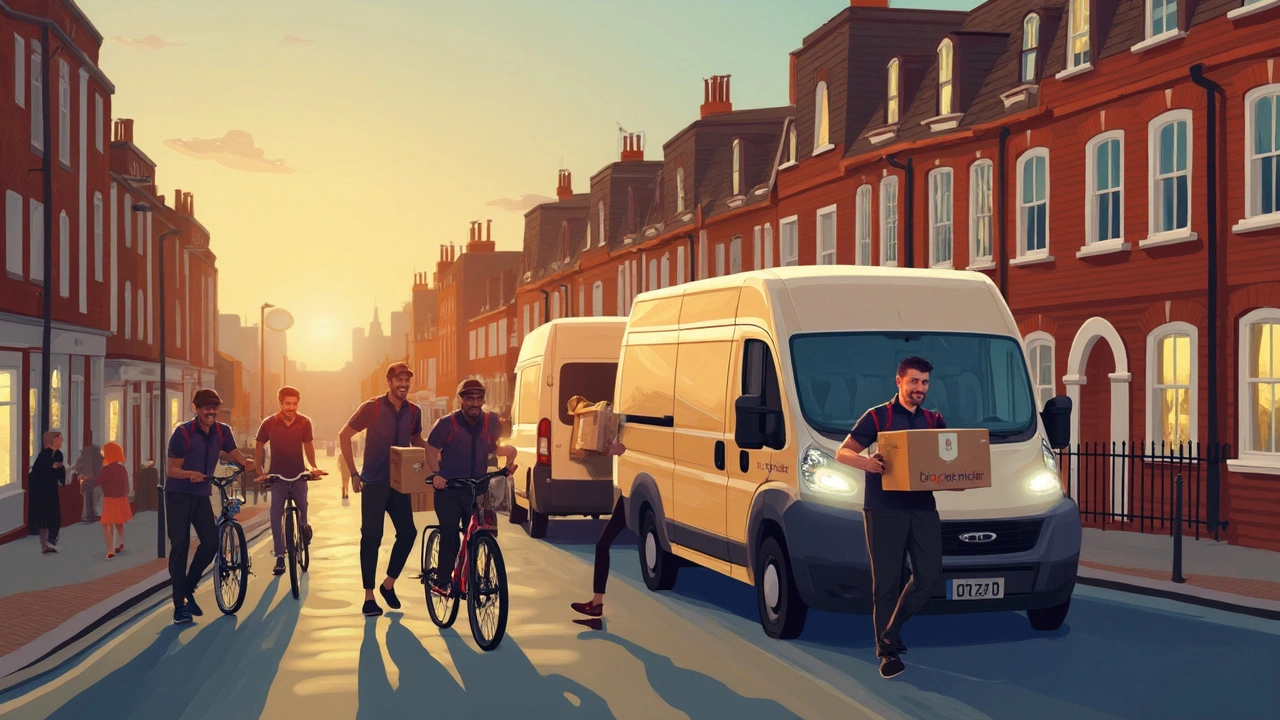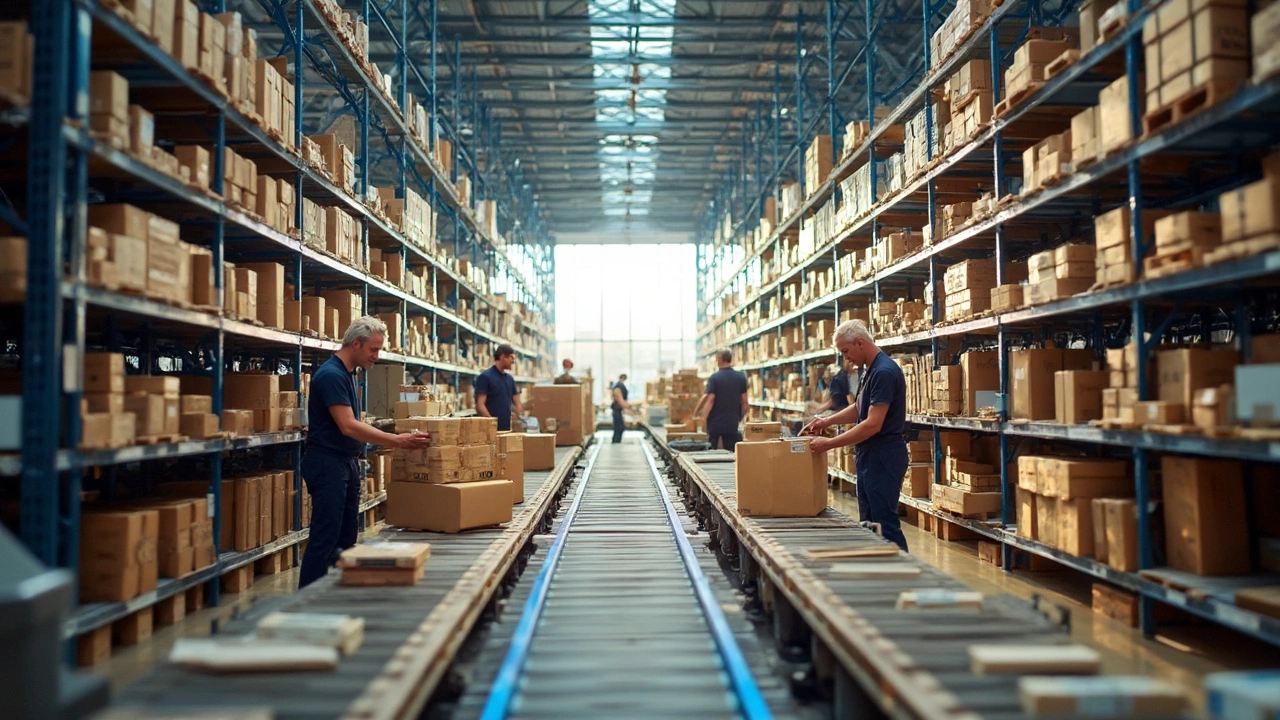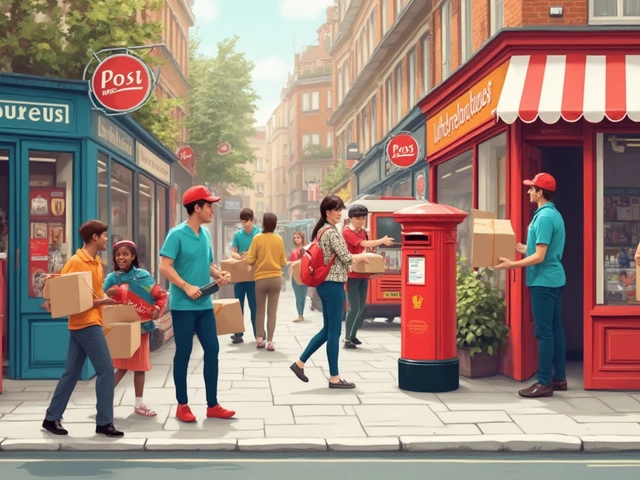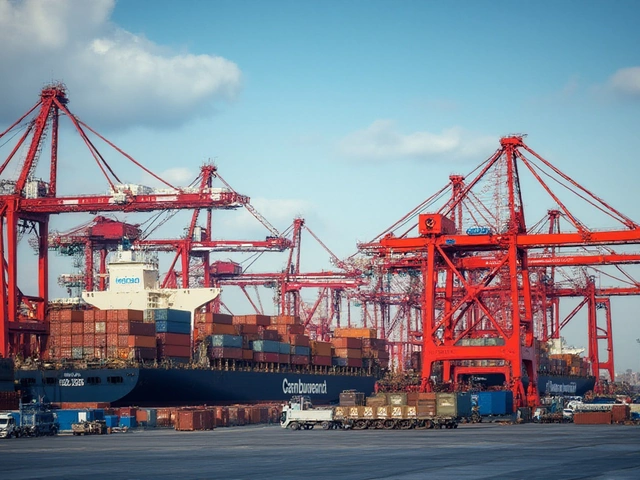How is it that a pair of sneakers you order online on Sunday morning arrives at your door in Auckland by Monday night? That moment—when something that existed as pixels becomes a real package—is magic for shoppers. But for online stores, it’s where the fun (and hard work) really begins. Logistics in ecommerce is the backbone that connects eager online shoppers with actual products, sometimes racing the clock and, in all likelihood, dodging a traffic jam or two on the way. The split-second expectations of today’s online buyers have made ecommerce logistics a fast-moving, fiercely competitive space. Miss too many deliveries or ship too slow, and the odds are your customers are already browsing someone else’s website.
What Is Ecommerce Logistics and Why It Matters
At its core, ecommerce logistics is about getting a product from a website’s virtual cart to a customer’s physical doorstep. But behind that simple idea is a web of warehouses, software, trucks, planes, barcode scanners, shelf organizers, and couriers. It’s everything from managing inventory in a warehouse in Hamilton or Sydney, to working with international air freight if someone in New Zealand orders a novelty mug from Germany.
Think of logistics as the unseen force that keeps every step—from a click on “Add to Cart” to the satisfying unboxing—running smoothly. The main components usually include:
- Warehousing: Storing goods until they’re sold.
- Inventory management: Tracking what’s coming in, what’s going out, and what needs restocked.
- Order fulfillment: Picking, packing, and preparing goods for shipment.
- Shipping: Moving goods from warehouse to customer by air, sea, or road.
- Last-mile delivery: The final step—giving the parcel to the shopper.
- Returns processing: Handling goods that come back.
With ecommerce, logistics often needs to juggle unpredictable order volumes. For example, during Black Friday or a TikTok-driven viral product trend, volumes can jump 10x overnight. Modern shoppers have grown so used to lightning-fast dispatches that even a minor delay can trigger frustration.
Here’s the twist: better logistics isn’t just about moving parcels faster. It can boost a retailer’s reputation, keep customers loyal, and even save tons of money. Every misplaced package, every delayed delivery, and every out-of-stock item costs real cash—and trust. In one recent Kiwi survey, nearly 65% of online shoppers said they’d abandon a cart if shipping times are too slow or costs too high. Want a loyal customer base? Nail your logistics.
And the standards just keep rising. By 2023, over 80% of shoppers worldwide expected tracking updates as standard, not a bonus. A few years ago, people would wait a week for a parcel and be happy; now, two days feels like forever. A major NZ courier said that since 2020, the amount of packages delivered “overnight” nearly doubled.
Big players like Amazon, The Iconic, and even local shops are investing heavy to compete. Robotics, AI, and data analytics are helping stores forecast demand, speed up picking, and keep up with trends. Still, even small businesses need solid logistics partners and good systems if they plan to stick around.

The Building Blocks of Ecommerce Logistics
Online shopping’s behind-the-scenes engine would grind to a halt without warehouses. Warehouses don’t just stash boxes; they’re high-tech hubs where products are scanned, sorted, shelved, picked, packed, shrink-wrapped, and loaded in record time. Some global warehouses handle up to 100,000 orders in a single day! In cities like Auckland or Christchurch, logistics companies try to keep warehouses close to main highways for quick dispatch.
Inventory management sits at the centre. Lose track of what’s in stock, and you’re done for. Most brands use real-time inventory software that automates reordering and updates product availability on websites. A study by Shopify showed that 43% of small businesses have accidentally oversold items after running out because of outdated systems. Ouch. Automation helps avoid unhappy customers and wasted marketing spend.
Order fulfillment is a race. Workers (or sometimes robots) pick out an order from its shelf, pack it up, print shipping labels, and get it out the door, sometimes in under 15 minutes. Speed here isn’t all about impressing customers; moving faster can save thousands in labour. Some brands let buyers pick their delivery date and track their package in real time, which keeps anxiety (and customer inquiries) to a minimum.
Shipping costs and speed make or break the online shopping experience. Customers expect shipping options: free, fast, or tracked. Offer none? Expect abandoned carts. Many NZ stores partner with local carriers, like NZ Post or CourierPost, alongside international giants like DHL or FedEx for cross-border delivery. Fun fact: “Click and collect” services, where buyers pick up from a local shop or locker, are growing fast in Wellington and Auckland, especially for folks who want to dodge missed delivery slips.
Let’s break down some eye-opening logistics data in ecommerce:
| Logistics Factor | NZ Data / Global Comparison |
|---|---|
| Average shipping speed (2024) | NZ: 2-3 days / Global: 1-4 days |
| Free shipping offered by retailers | NZ: 58% / Global: 70% |
| Cart abandonment due to delivery issues | NZ: 65% / Global: 61% |
| Consumers who want real-time tracking | NZ: 80% / Global: 83% |
| Average logistics cost per order | NZ: $7.50 / Global: $5.20 |
Returns are a pain point, but top retailers treat them as part of the shopping journey. Customers want free, easy returns, especially for clothes and tech. Some stores email a prepaid label, while others offer in-person drop-offs. Even handling returns now needs barcode scanning and real-time refunds to keep frustration low.
For eco-minded shoppers, logistics brings a challenge: how to deliver fast and still tread lightly. NZ brands are starting to use recycled packaging, carbon-neutral deliveries, and electric vans. One Auckland-based chain, for instance, promises to offset every online delivery’s carbon footprint. Small moves, but they add up—and they build major goodwill with customers who care.
All these moving pieces rely on technology. Modern logistics platforms integrate with ecommerce stores, couriers, and warehouses, making sure real-time data flows smoothly. Automation, once limited to giants like Amazon, is now helping even Kiwi startups scale up quickly and reduce errors. A tiny online business today can offer next-day shipping without ever owning a warehouse thanks to “third-party logistics” (3PL) providers. They handle storage, pick, pack, and ship, letting the store focus on what it does best—selling and delighting customers.

The Biggest Challenges and Smart Logistics Tips for Online Stores
Getting logistics right isn’t easy, especially as customers’ expectations soar. One little hiccup—like a missed package after a birthday, or a delay before Christmas—can turn a loyal fan into a critic overnight. For online retailers, the stress is real: mishandled logistics aren’t just an annoyance. They’re a threat to the whole business. So what are the main pain points?
- Delivery Delays: Floods, traffic, and courier backlogs happen. Proactive communication helps soften frustration.
- Inventory Mistakes: Accidental overselling or running out of stock irritates customers—and burns money.
- High Shipping Costs: Too few free/low-cost options and watch carts get abandoned.
- Lost or Damaged Packages: These damages can hurt trust and demand replacements or refunds on the spot.
- Complicated Returns: Shoppers want returns to be simple and painless. If not, they'll think twice before buying again.
- International Orders: Navigating customs, currency shifts, and distant shipping increases complexity and cost.
Top ecommerce brands all wrestle with these, but smart ones deploy a blend of tech, transparency, and empathy. Here are a few practical tips that work—whether you run a garage startup or a warehouse empire:
- Use Reliable Inventory Management: Automate your stock control. Sync your warehouse, selling platform, and couriers so online shoppers never buy what’s out of stock. This avoids the #1 reason for grumpy customers.
- Pick the Right Logistics Partners: Don’t just chase the cheapest. Look at their delivery rates, tracking features, and customer service.
- Offer Multiple Shipping and Pickup Options: Free, express, and click-&-collect all meet different customer needs. Give choice, and more carts will convert.
- Communicate Orders Clearly: Send tracking links instantly. If weather shuts a highway, let buyers know before they ask.
- Simplify Returns: Pre-paid returns labels and a clear policy create trust. Treat your returns as a brand experience, not just a nuisance.
- Plan for Surges: Black Friday or Christmas? Prep warehouses, double-check stocks, and test your systems ahead. Don’t get caught off guard.
- Monitor Analytics: Use data on what causes delays or lost parcels. Fix weak links before they turn into crises.
- Go Green When You Can: Try compostable mailers, grouped deliveries, or carbon offsets. Small changes build loyalty.
As logistics specialist Paul S. from Gartner put it:
“The difference between an average ecommerce store and a beloved one is their ability not just to sell, but to deliver on promises—literally. Getting logistics right wins lifelong customers.”
Customers rarely think about all the gears turning behind that magic parcel on their doorstep. But every single shipment is a test of how much a brand really cares. Logistics isn’t just a cost—it’s the secret sauce powering every successful ecommerce logistics story.





